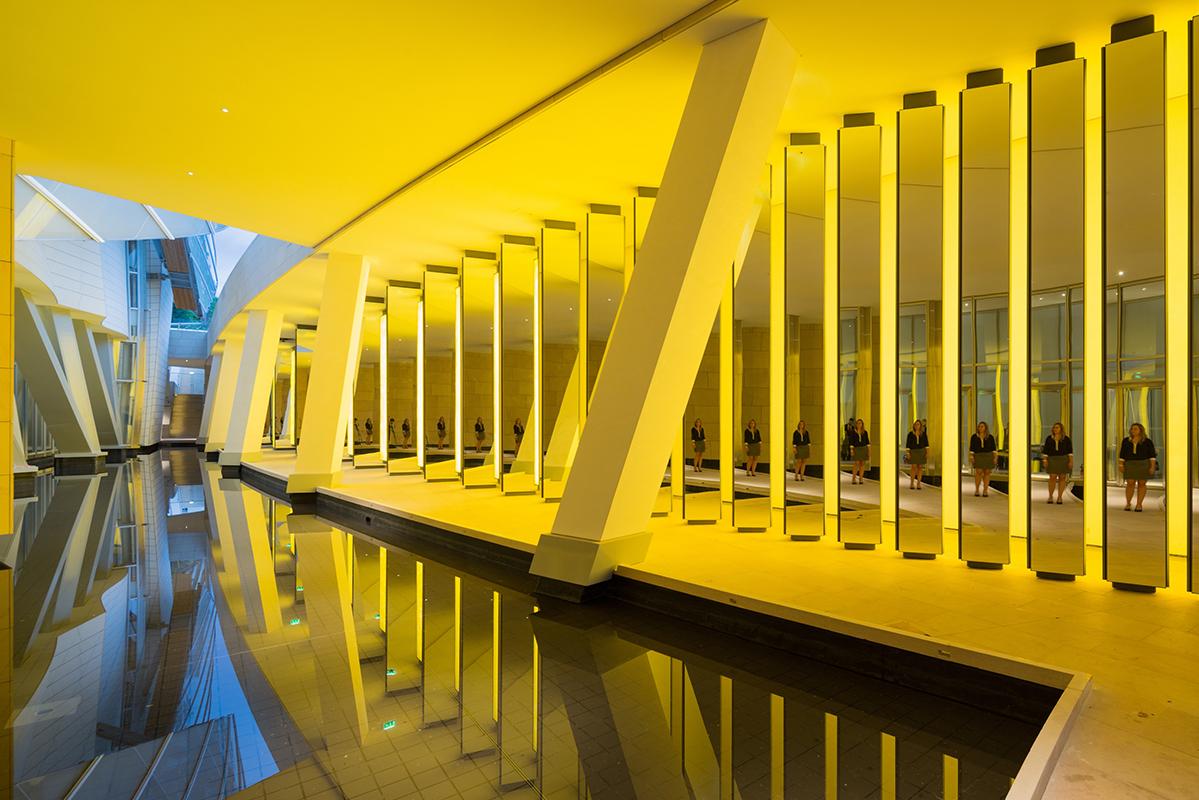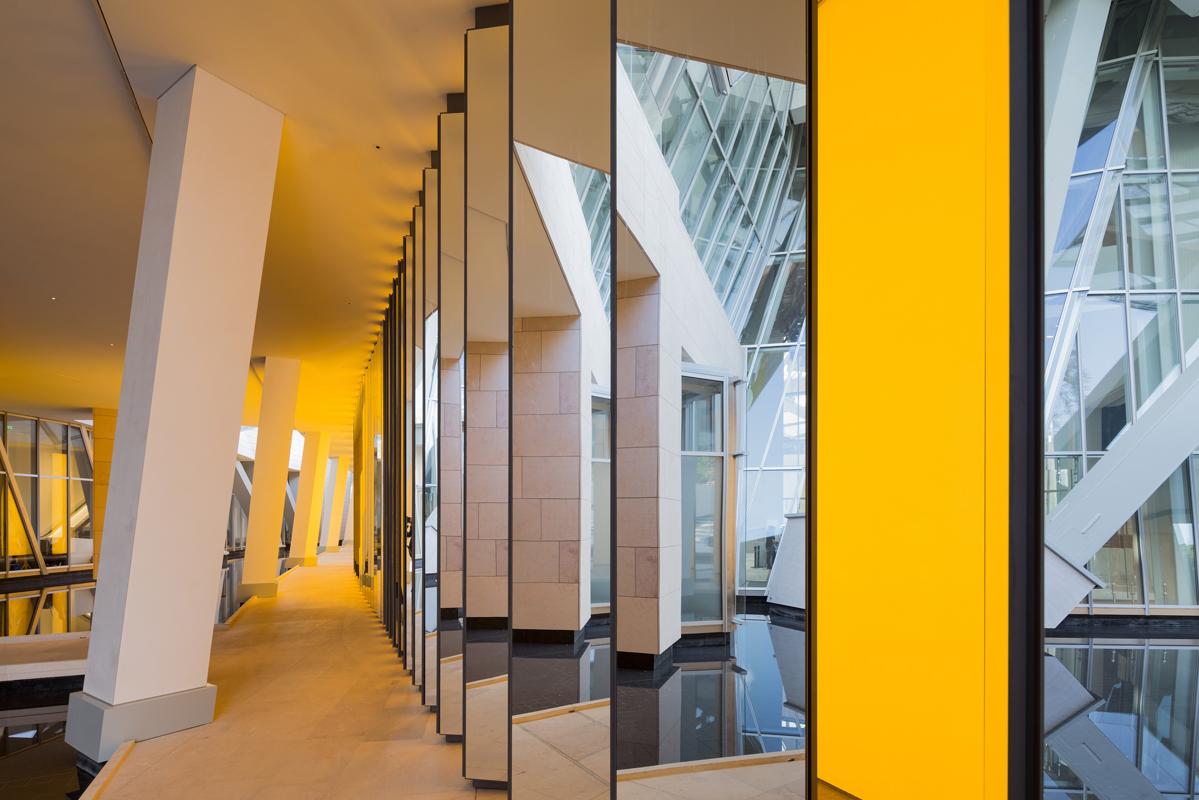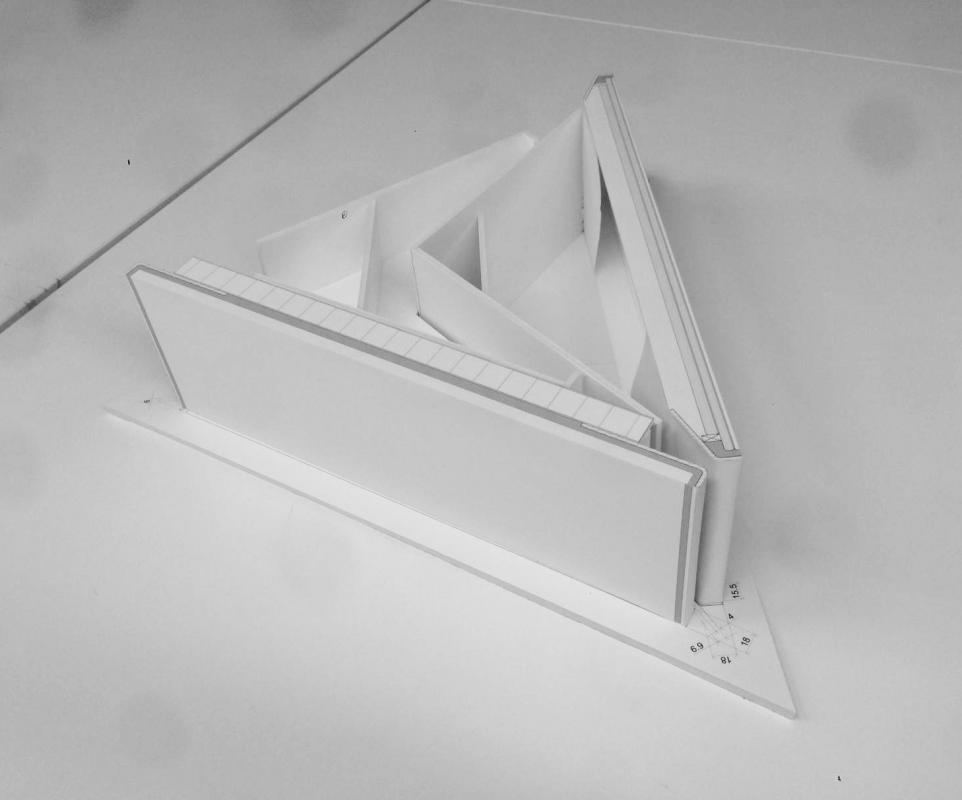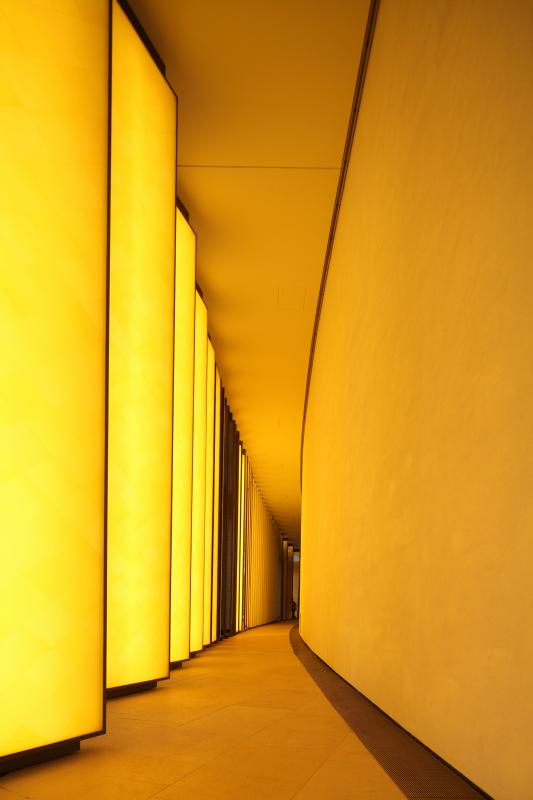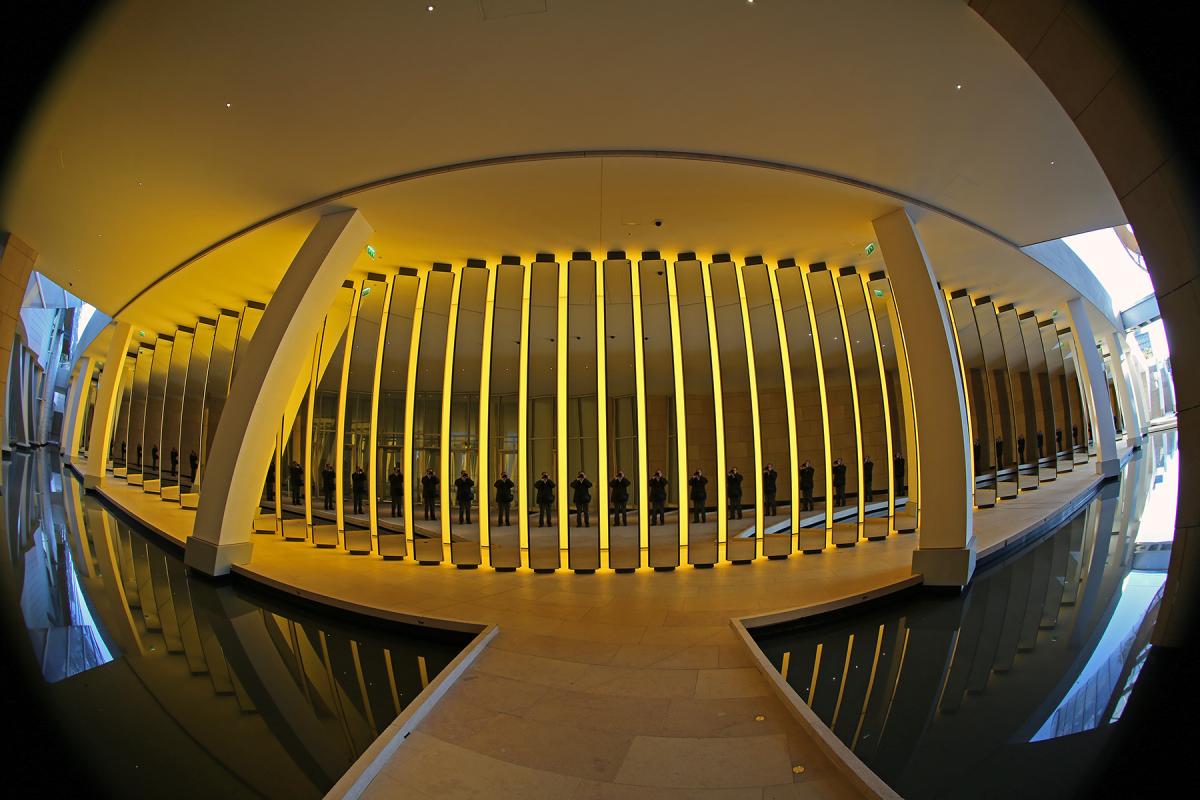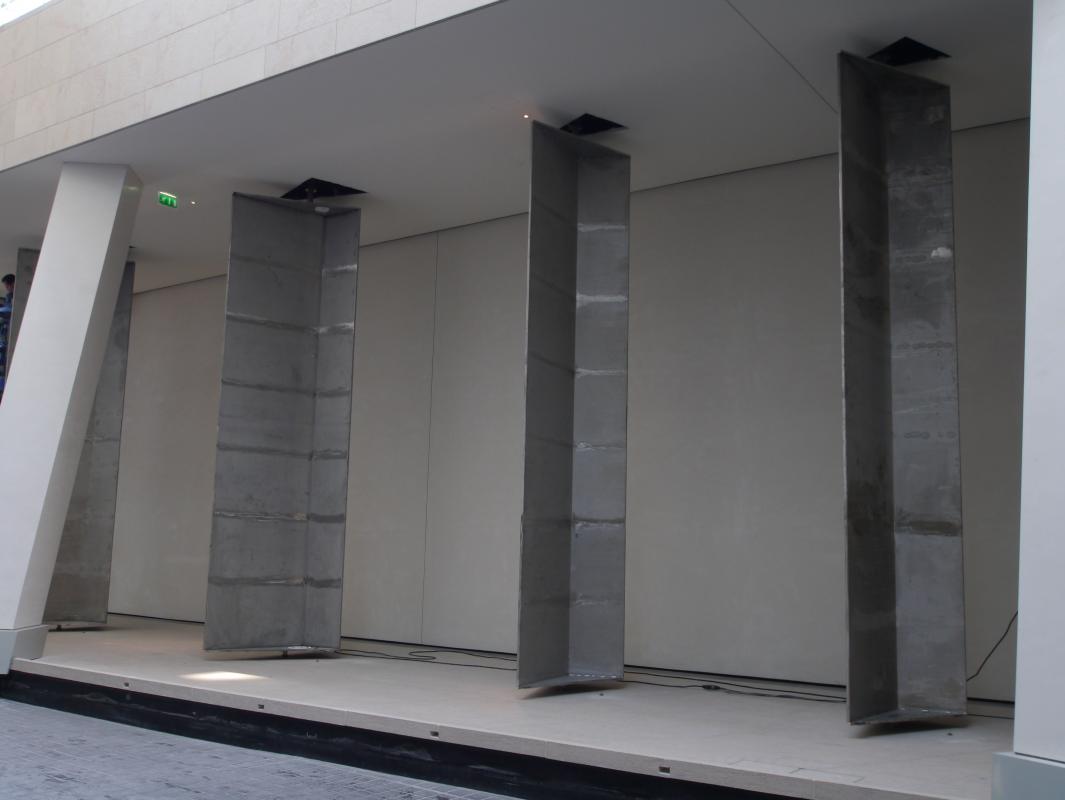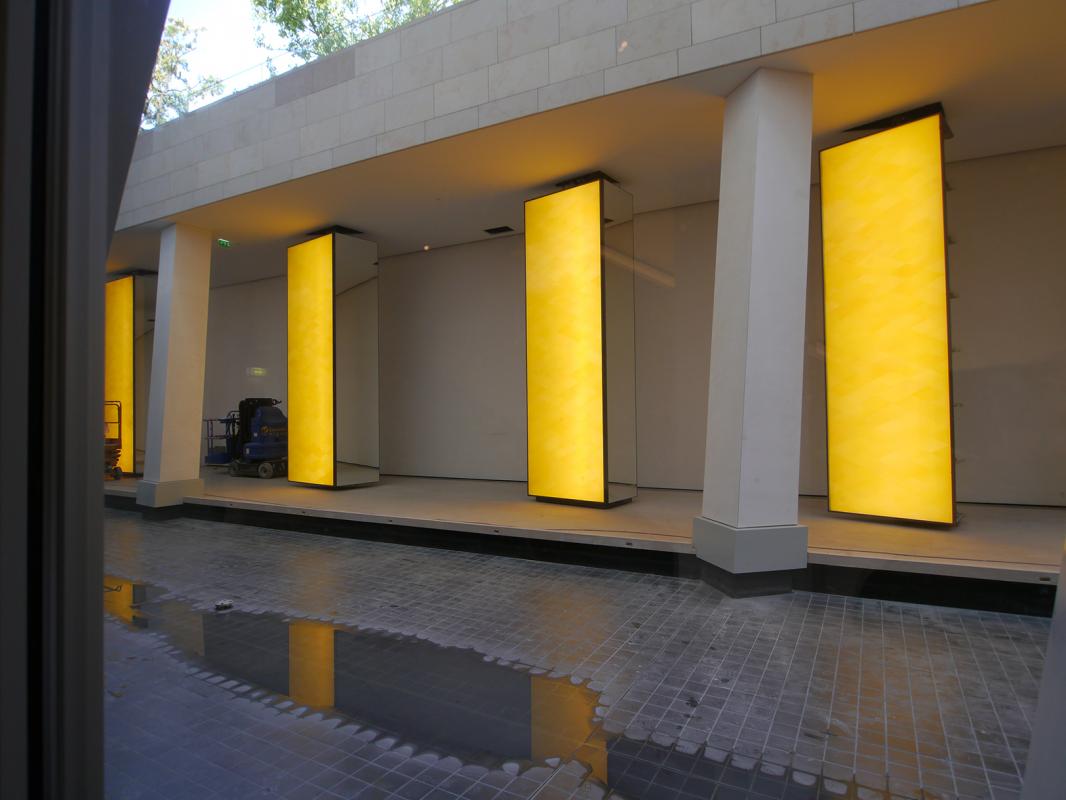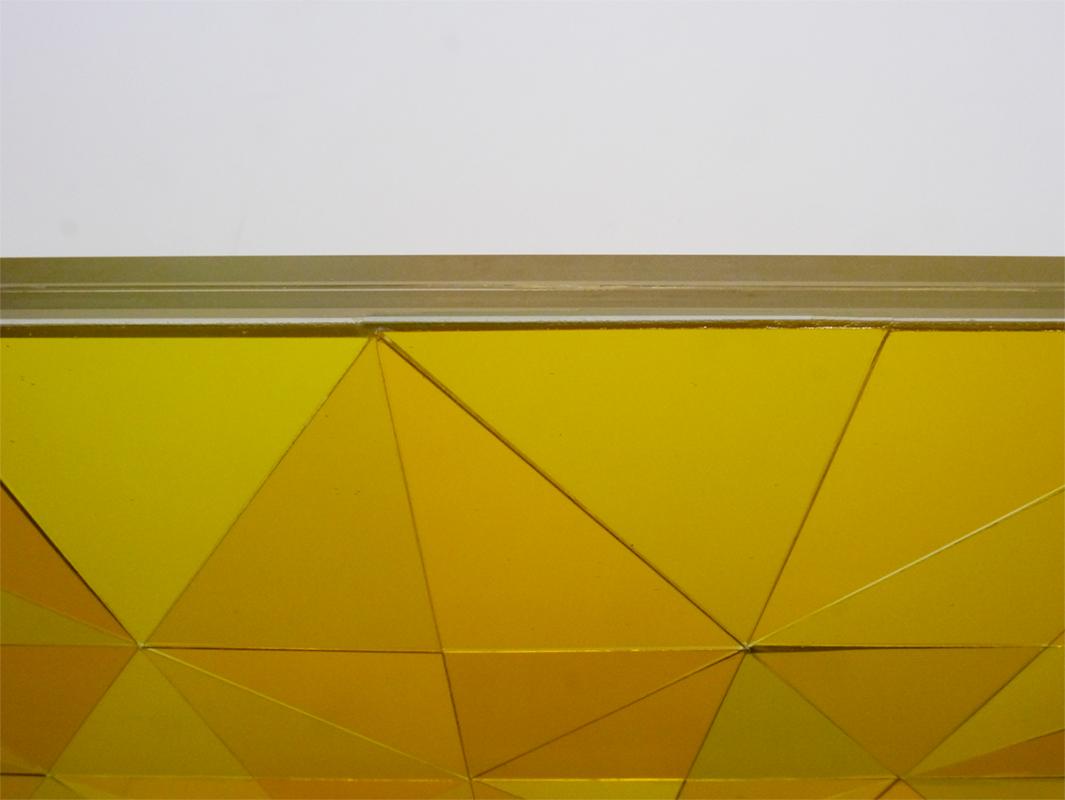Grotto
Inside the Horizon by Olafur Eliasson, commissioned for the Fondation Louis Vuitton
The Fondation Louis Vuitton invited Olafur Eliasson to create a permanent piece for the Grotto, a semi-underground walkway beneath the Fondation, along the north side of the pool. The artist designed a piece composed of 43 columns installed along the walkway, bathing the entire space in yellow light and providing reflections of the space and its visitors in the manner of a monumental kaleidoscope.
As a continuation of its work on the building, the RFR+T/E/S/S partnership was commissioned for the technical design and site supervision of this work of art, which in many ways resembles a complex facade.
The installation’s 43 triangular columns, all different, are each composed of a panel of yellow blown-glass mosaic, back-lit by powerful LED spotlights, and two panels in a single piece of mirrored glass, including a Fresnel mirror (a dichroic system) oriented towards the focal point of the installation. Emerging from the building and passing in front of this precise geometric point, visitors see themselves reflected simultaneously in each of the 43 columns.
The structure of the columns had to be absolutely rigid in order to avoid considerably amplifying any possible deformation. It had to be designed for speed of production and installation for the inauguration of the building. A high proportion of prefabrication was envisaged from the outset. The team designed a stainless-steel shell structure of stiffened folded sheets, held together by a central torsion tube. Sitting on a small central pivot, the columns could be turned on their vertical axis to adjust the focal point, for which the artist wanted “the quality of an optical instrument”.
Significant technical development went into designing the panels. The mirrors are bonded with structural silicone onto a perfectly flat sandwich panel in order to manage optical deformations and isolate the layer of silver from external moisture. The yellow stained-glass mosaic, in traditional blown glass, underwent breakage testing to ascertain acceptable levels of deformation. The edge details were studied at length with the artist and the contractor to perfect the finish, while also allowing for ease of installation and replacement of the panels.

